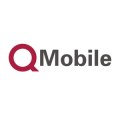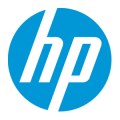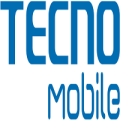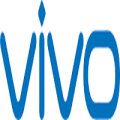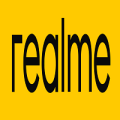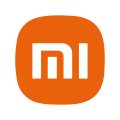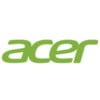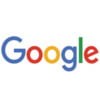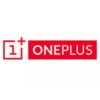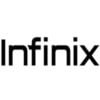- Awesome page
- Latest Mobile
- Smartphones
- Motorola Edge+
Motorola Edge+
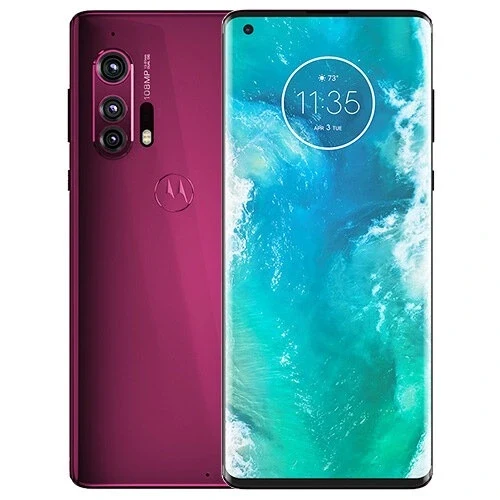

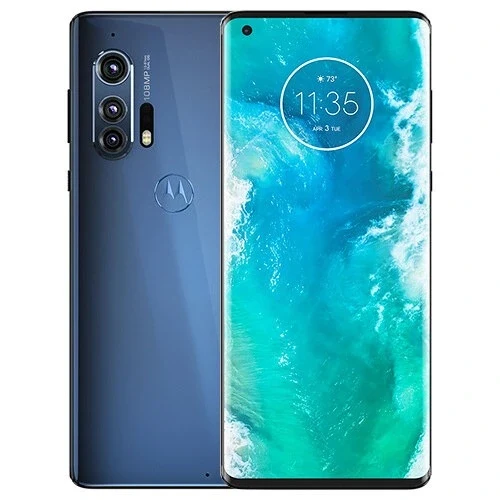

Motorola Edge Plus Price in Bangladesh
The Motorola Edge+ is available for BDT 35,000. The Motorola Edge Plus is a smartphone with a 6.7-inch, 110.2-cm2 (~95.8% screen-to-body ratio), 16 million color display, AMOLED capacitive touchscreen, 19.5:9 ratio (~385 ppi density), and resolution of 1080 x 2340 pixels. The Qualcomm SM8250 Snapdragon 865 (7 nm+) Octa-core (1×2.84 GHz Kryo 585 & 3×2.42 GHz Kryo 585 & 4×1.8 GHz Kryo 585) processor is powering the Motorola Edge+. It contains 256 GB of internal storage that cannot be upgraded to include external storage, along with 12 GB of RAM. This fashionable gadget features a 25 MP camera on the front and 108 MP, 8 MP, and 16 MP cameras on the rear. A regular 5000 mAh Li-po battery was used to power it.
Specifications
General
| Model | Motorola Edge+ |
| Announced | 22-04-2020 |
| Released | 14-05-2020 |
| Status | Available |
| Official price | 12GB 56GB ৳35,000 |
Design
| Dimensions | 161.1 x 71.4 x 9.6 mm (6.34 x 2.81 x 0.38 in) |
| Weight | 203 g (7.16 oz) |
| Colors |
Smokey Sangria, Thunder Grey |
Network
| Technology | GSM / CDMA / HSPA / EVDO / LTE / 5G |
| 2G Network |
GSM 850 / 900 / 1800 / 1900 CDMA 800 / 1900 |
| 3G Network |
HSDPA 850 / 900 / 1700(AWS) / 1900 / 2100 - Global HSDPA 850 / 900 / 1900 / 2100 - Verizon CDMA2000 1xEV-DO |
| 4G Network |
1, 2, 3, 4, 5, 7, 8, 12, 13, 17, 20, 25, 26, 28, 29, 30, 34, 38, 39, 40, 41, 42, 46, 66, 71 - Global 1, 2, 3, 4, 5, 7, 8, 12, 13, 17, 20, 28, 46, 48, 66 - Verizon |
| 5G Network |
5, 41, 66, 71, 77, 78 Sub6 - Global 2, 5, 66, 260, 261 mmWave/Sub6 - Verizon |
| GPRS <strong>GPRS</strong> (General Packet Radio Service) is a packet oriented mobile data service on the 2G and 3G cellular communication system's global system for mobile communications (GSM), Generally, GPRS is used for the purpose of wireless data transfer, such as sharing pictures and videos or browsing the Internet via a mobile phone connection. | |
| EDGE <strong>EDGE</strong> (Enhanced Data GSM Environment) is a wireless network technology generally considered the next step in the 2G network offers data transfer rates up to four times faster than ordinary GSM networks, Generally, EDGE is used for the purpose of wireless data transfer, such as sharing pictures and videos or browsing the Internet via a mobile phone connection. | |
| Speed | HSPA 42.2/5.76 Mbps, LTE-A (6CA) Cat20 2000/200 Mbps, 5G 4 Gbps DL |
Display
| Display Type <strong>Display Technology => </strong> A number of display technologies and types used in mobile phones => TFT (Thin Film Transistor), IPS (In-Place Switching), OLED (Organic Light Emitting Diode), AMOLED (Active-Matrix Organic Light-Emitting Diode), Super AMOLED (an even advanced version of AMOLED), Resistive Touchscreen (Resistive touchscreens contain two layer of conductive material with a very small gap between them which acts as a resistance), Capacitive Touchsceen (Capacitive touchscreen technology consists of a layer of glass coated with a transparent conductor) | OLED capacitive touchscreen, 16M colors |
| Size | 6.7 inches, 110.2 cm2 (~95.8% screen-to-body ratio) |
| Resolution | 1080 x 2340 pixels, 19.5:9 ratio (~385 ppi density) |
| Features |
Protection: Corning Gorilla Glass 5 90Hz refresh rateHDR10+ |
Camera
Main camera
| Camera Setup | Triple |
| Primary <strong>Camera</strong> is able to capture photographs and usually videos, The most important characteristics of a camera are the resolution (measured in megapixels), lens focus type (fixed or automatic), higher megapixel cameras are known to capture higher quality photos, but not always a good measurement of the photos quality. |
108 MP, f/1.8, (wide), 1/1.33&amp;quot;, 0.8µm, PDAF, OIS 8 MP, f/2.4, 81mm (telephoto), 3x optical zoom, PDAF, OIS 16 MP, f/2.2, 13mm (ultrawide), 1.0µm, AF TOF 3D, (depth) |
| Features |
Dual-LED dual-tone flash, panorama, HDR |
| Video | 6K@30fps, 4K@30fps, 1080p@30/60/120fps, gyro-EIS |
Selfie camera
| Camera Setup | Single |
| Primary <strong>Camera</strong> is able to capture photographs and usually videos, The most important characteristics of a camera are the resolution (measured in megapixels), lens focus type (fixed or automatic), higher megapixel cameras are known to capture higher quality photos, but not always a good measurement of the photos quality. |
25 MP, f/2.0, 0.9µm |
| Features | HDR |
| Video | 1080p@30/120fps |
Hardware
| Chipset <strong>Chipset</strong> is a group of integrated circuits designed to perform one or a more dedicated functions, often with real time computing constraints, Popular smartphones are equipped with more advanced embedded chipsets that can do many different tasks depending on their programming. | Qualcomm SM8250 Snapdragon 865 (7 nm+) |
| CPU <strong>CPU</strong> (Central Processing Unit) mostly known as processors, CPU processes instructions in order to carry out certain functions that make your device operate properly. Processors are often described as the brain of computers, smartphones and tablets, Smartphones and tablets rely on processors to carry out their every task, Processors are an incredibly important factor in selecting any type of computing device, including your smartphone. | Octa-core (1x2.84 GHz Kryo 585 & 3x2.42 GHz Kryo 585 & 4x1.8 GHz Kryo 585) |
| GPU <strong>GPU</strong> (Graphics Processing Unit) is a single-chip processor designed to rapidly manipulate and alter memory to accelerate the creation of images in a frame buffer intended for output to a display, This includes things such as lighting effects, object transformations, and 3D motion. | Adreno 650 |
| RAM (Memory) <strong>RAM</strong> (Random Access Memory) is a type of computer memory that can be accessed randomly, any byte of memory can be accessed without touching the preceding bytes that allows information to be stored and accessed quickly from random locations. RAM is the most common type of memory found in computer systems, smartphones, tablets and other electronic devices. | 12 GB |
| Internal Storage <strong>Internal Storage</strong> is a data storage space (flash memory) mostly used in smartphones, tablets and other electronic devices where operating system, apps, music, photos, videos, files and other user data Is stored. | 256 GB UFS 3.0 |
| Sensors <strong>Sensors</strong> are electronic components that detects and responds to some type of input from the physical environment. The specific input could be light, heat, motion, moisture, pressure and location, The output is generally a signal that is converted to use in computing systems, a location sensor, such as a GPS receiver is able to detect current location of your electronic device. |
Fingerprint (under display, optical), accelerometer, gyro, proximity, compass, barometer |
Connectivity
| Bluetooth <strong>Bluetooth</strong> is a wireless communications technology for exchanging data between mobile phones, headsets, computers and other network devices over short distances without wires, Bluetooth technology was primarily designed to support simple wireless networking of personal consumer devices. | 5.1, A2DP, LE |
| Infrared <strong>Infrared</strong> connectivity is an old wireless technology used to connect two electronic devices. It uses a beam of infrared light to transmit information and so requires direct line of sight and operates only at close range. | |
| USB | Type-C 1.0 reversible connector |
| GPS <strong>GPS</strong> The Global Positioning System is a satellite-based radio navigation system, GPS permits users to determine their position, velocity and the time 24 hours a day, in all weather, anywhere in the world, In order to locate your position, your device or GPS receiver must have a clear view of the sky. | Yes, with dual-band A-GPS, GLONASS, BDS, GALILEO |
| NFC <strong>NFC</strong> (Near field communication) is a set of standards for smartphones and similar devices to establish peer-to-peer radio communications with each other by touching them together or bringing them into proximity, usually no more than a few inches. |
Battery
| Battery Type <strong>Battery Type => </strong> Cell phones run on various kinds of batteries depending on the manufacturer, phone size or shape and features. There are basically four types of cell phone batteries => Lithium Polymer, Lithium Ion, Nickel Metal Hydride and Nickel Cadmium. | Non-Removable Li-Po |
| Capacity <strong>Battery Capacity</strong> is a measure (typically in Amp-hr) of the charge stored by the battery, and is determined by the mass of active material contained in the battery. The battery capacity represents the maximum amount of energy that can be extracted from the battery under certain conditions. | 5000 mAh |
Motorola Edge+ Sets the Bar High for Flagship Smartphones
Are you on the hunt for a smartphone that excels in performance, photography, and user experience? Meet the Motorola Edge+, a device designed to challenge current market leaders. In this review, we’ll take an in-depth look at its features, performance, camera capabilities, and more to help you decide if it’s the right fit for you.
Unpacking the Key Features of the Motorola Edge+
The Motorola Edge+ is packed with features that are sure to catch the eye of tech enthusiasts, smartphone gamers, and mobile photography lovers. From a powerful Qualcomm Snapdragon 865 processor to an advanced camera system, it promises a top-tier experience.
Stellar Performance with Snapdragon 865
At the heart of the Motorola Edge+ lies the Snapdragon 865 processor, offering lightning-fast speeds and seamless multitasking. This chip ensures that even the most demanding apps and games run smoothly, making it a prime choice for those who prioritize performance.
Impressive Camera Setup
Equipped with a 108MP main camera, the Motorola Edge+ aims to redefine your mobile photography experience. Complemented by a telephoto lens, ultra-wide lens, and depth sensor, it offers versatility for every shot.
Curved OLED Display
The 6.7-inch OLED display wraps around the edges, providing an immersive viewing experience. With a 90Hz refresh rate, it promises smooth scrolling and vibrant colors, ideal for both gaming and media consumption.
Performance Review: Speed and Gaming Capabilities
When it comes to performance, the Motorola Edge+ doesn’t disappoint. Let’s explore how it handles day-to-day tasks and intense gaming sessions.
Everyday Performance
Whether you’re juggling multiple apps or streaming high-definition content, the Snapdragon 865 processor ensures everything runs like a well-oiled machine. The phone’s 12GB of RAM further enhances its capability to handle heavy workloads effortlessly.
Gaming Experience
For smartphone gamers, the Motorola Edge+ offers an unparalleled experience. The Adreno 650 GPU delivers high frame rates and stunning graphics, ensuring games run smoothly without any lag. The phone’s cooling system also keeps it from overheating during long gaming sessions, making it a reliable companion for gamers.
Benchmark Scores
In benchmark tests, the Motorola Edge+ scores impressively, often surpassing other flagship models. This is a testament to its robust performance architecture, which can handle both intensive gaming and multitasking without breaking a sweat.
Photography and Videography Excellence
A major selling point of the Motorola Edge+ is its camera system. Let’s break down its capabilities and see how it fares in real-world scenarios.
The 108MP Main Camera
The 108MP main sensor captures stunning detail and vibrant colors, making it perfect for both casual shots and professional-level photography. The high resolution allows for ample cropping without loss of quality, giving you the flexibility to frame your shots just right.
Additional Lenses
The telephoto lens offers 3x optical zoom, while the ultra-wide lens provides a 117-degree field of view, ideal for landscape and group photos. The depth sensor aids in creating beautiful bokeh effects, adding a professional touch to portraits.
Videography Capabilities
When it comes to videography, the Motorola Edge+ supports 6K video recording, ensuring high-quality footage. The built-in stabilization feature reduces shake, making it easier to capture smooth videos even when you’re on the move.
User Experience: Battery Life, Display, and UI/UX
A smartphone is more than just its specs; user experience plays a crucial role in its overall appeal. Here’s how the Motorola Edge+ fares in this department.
Battery Life
With a 5,000mAh battery, the Motorola Edge+ promises all-day battery life, even with heavy use. Fast charging and wireless charging capabilities add to its convenience, ensuring you’re never left stranded without power.
Display Quality
The curved OLED display is a visual treat, offering deep blacks and vibrant colors. The 90Hz refresh rate makes every interaction feel fluid, whether you’re scrolling through social media or playing games. The edge display also provides quick access to notifications and shortcuts, enhancing usability.
User Interface and Experience
Running on near-stock Android, the Motorola Edge+ offers a clean and intuitive user interface. The lack of bloatware ensures smooth performance, and Motorola’s custom gestures add a layer of convenience for everyday tasks.
How Does It Compare to Other Flagships?
To truly understand the value of the Motorola Edge+, it’s essential to compare it with other flagship smartphones. Let’s see how it stacks up against the competition.
Against the Samsung Galaxy S21
The Samsung Galaxy S21 is a strong competitor, known for its high-quality display and versatile camera system. While the Galaxy S21 excels in certain areas, the Motorola Edge+ offers a better battery life and a cleaner user interface, making it a compelling alternative.
Versus the iPhone 12 Pro
Apple’s iPhone 12 Pro is another heavyweight in the flagship category. The iPhone 12 Pro boasts superior build quality and a robust app ecosystem. However, the Motorola Edge+’s 108MP camera and 90Hz OLED display give it an edge in photography and media consumption.
Comparing with the OnePlus 9 Pro
The OnePlus 9 Pro is known for its performance and fast charging capabilities. While it offers similar specs to the Motorola Edge+, the latter’s camera system and battery life provide a slight advantage, making it a strong contender in the flagship market.
Pros and Cons for Different User Groups
Every smartphone has its strengths and weaknesses. Here’s a breakdown tailored to our target audience.
For Tech Enthusiasts
Pros:
- Cutting-edge Snapdragon 865 processor
- Near-stock Android experience
- Impressive battery life
Cons:
- Higher price point compared to mid-range options
- Curved display may have accidental touches
For Smartphone Gamers
Pros:
- High refresh rate display
- Powerful GPU for smooth gaming
- Effective cooling system
Cons:
- Large size may be cumbersome for some
- Limited game-specific features compared to gaming phones
For Mobile Photography Lovers
Pros:
- Versatile 108MP camera system
- Excellent low-light performance
- 6K video recording
Cons:
- Camera bump makes it prone to scratches
- No dedicated camera button
Final Thoughts and Recommendations
The Motorola Edge+ stands out as a well-rounded flagship smartphone, offering top-notch performance, a versatile camera system, and a user-friendly experience. It’s particularly suited for tech enthusiasts, smartphone gamers, and mobile photography lovers who seek a device that excels in multiple areas.
If you’re looking for a reliable and powerful smartphone that can handle everything from gaming to photography, the Motorola Edge+ is definitely worth considering. Its blend of performance, features, and usability makes it a strong contender in the crowded flagship market.







